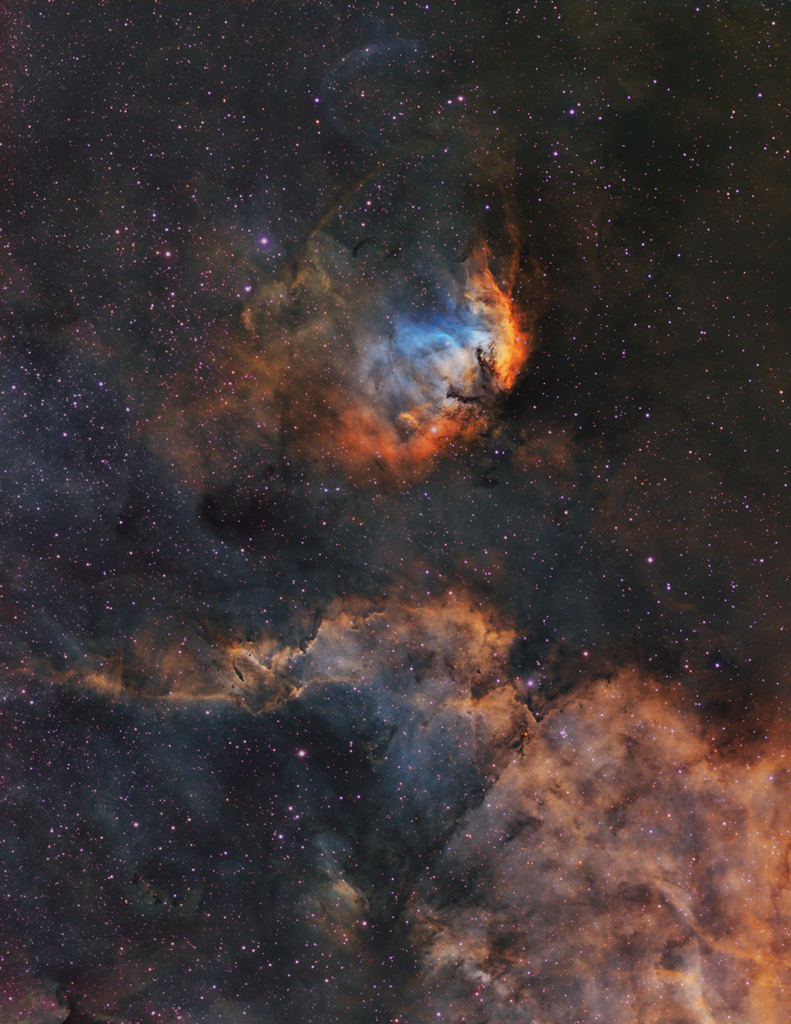2021年7月29日
The Tulip and Cygnus X-1
Image Credit & Copyright: Carlos Uriarte
Explanation: This tall telescopic field of view looks out along the plane of our Milky Way Galaxy toward the nebula rich constellation Cygnus the Swan. Popularly called the Tulip Nebula, the brightest glowing cloud of interstellar gas and dust above center is also found in the 1959 catalog by astronomer Stewart Sharpless as Sh2-101. Nearly 70 light-years across the complex and beautiful Tulip Nebula blossoms about 8,000 light-years away, shown in a Hubble palette image that maps the glow of the nebula’s sulfur, hydrogen, and oxygen ions into red, green, and blue colors. Ultraviolet radiation from young energetic stars at the edge of the Cygnus OB3 association, including O star HDE 227018, ionizes the atoms and powers the emission from the Tulip Nebula. Also in the field of view is microquasar Cygnus X-1, one of the strongest X-ray sources in planet Earth’s sky. Driven by powerful jets from a black hole accretion disk, its fainter bluish curved shock front is only just visible though, directly above the cosmic Tulip’s petals near the top of the frame.
Tomorrow’s picture: Saturnshine
郁金香星云与天鹅座X-1
影像提供与版权: Carlos Uriarte
说明: 这幅竖直的望远镜影像,视野涵盖银河盘面上满布星云的天鹅座。影像中心上方最明亮的星际气体尘埃云,名为郁金香星云,也是天文学家夏普勒斯所编辑的1959年星表里,编录号Sh2-101的天体。这幅根据哈伯色表上色的哈伯望远镜影像,呈现这团约8,000光年远、形状复杂、宽将近70光年的美丽花朵状星云;其中,星云内的硫、氢和氧离子发出的辉光,分别上色为红、绿及蓝等色彩。而来自天鹅座OB3星协边缘的年轻活跃恒星,包括位在这团星云中心附近的明亮O型星HDE 227018之紫外辐射,则电离这些原子,驱动郁金香星云发出辉光。此外,在这片视野里,还有地球天空中最强烈的X射线源之一、微类星体天鹅座X-1。在郁金香星云花瓣上方的影像顶缘附近,可见受到这颗黑洞吸积盘中心的强烈喷流之冲击,所形成的暗淡弓形激震波前沿。
明日的图片: Saturnshine



